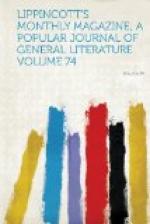Besides the strong appeal thus made to his sympathy, the young pastor nowhere else felt as in this valley the inspiration of his parish’s history. Dourmillouse especially he regarded as the most staunchly Protestant of all the villages to which he ministered. “It is celebrated,” he writes, “for the resistance which its inhabitants have opposed for more than six hundred years to the Church of Rome. They never bowed their knee before an idol, even when all the inhabitants of the valley of Queyras” (on the opposite side of the Durance, and embracing Arvieux, St. Veran and other villages) “dissembled their faith. The aspect of this desert, both terrible and sublime, which served as the asylum of truth when almost all the world lay in darkness; the recollection of the faithful martyrs of old; the deep caverns into which they withdrew to read the Bible in secret and to worship the Father of Light in spirit and in truth,—everything tends to elevate my soul.” He spent here the whole of one winter and large portions of another, and it was here that he gathered his most important schools.
The rest of the field was not, however, neglected. Neff allowed himself twenty-one days for traversing his parish from end to end, and during much of the year his rounds succeeded each other with little interval. He was continually passing from the extreme of heat in sunny valleys to the arctic cold of snows and glaciers. His lodging on these journeys was in the huts of the peasants. He shared their coarse and unwholesome food, often cooked in ill-cleansed copper vessels. He slept in small, unventilated hovels, a dozen other persons often dividing with him the scanty space. He did not shrink from even the stables in winter. However exhausted he might be by hours of toilsome walking, his elastic spirit quickly revived: all thought of refreshment for himself was secondary to the spiritual wants he sought to meet in others.




